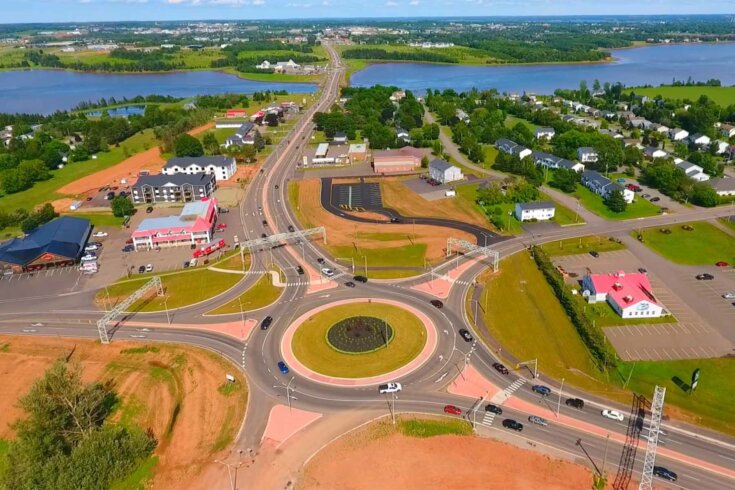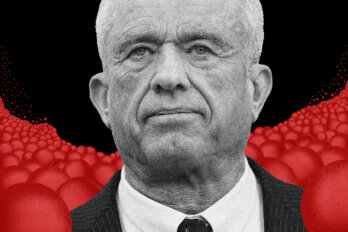I remember when Prince Edward Island introduced its first roundabout, in a place called Travellers Rest. The year was 2006. A notorious intersection along the Island’s busiest highway was converted from a “T” junction into a traffic circle that funnelled vehicles seamlessly in three directions, without the pesky need for stop signs or traffic lights. This is the same intersection where—during the summer crush of the Island’s busy tourist season—you might have had to wait fifteen or twenty minutes just to make a left turn. Such brutal wait times often encouraged impatient drivers to take reckless chances zipping into oncoming traffic, which made this particular junction one of the most dangerous and lethal on PEI.
In the lead-up to the roundabout’s debut, Islanders, as usual, were fiercely divided. Plenty were outraged, some were vocally supportive—though most were simply confused. Many had never seen a roundabout before. Older Islanders in particular were concerned about how to navigate the darn things without causing themselves embarrassment. To allay such fears, the provincial government launched a public campaign to teach Island drivers what to do when approaching the new roundabout, including setting up a scale model in a large parking lot at the old air force base in Slemon Park so Islanders could get in some practice before attempting the real thing, without fear of being found out.
“The bagel,” as that first roundabout came to be known, soon became a fixture on the Island landscape—and a lightning rod for criticism from a minority of Islanders and visitors alike. Despite the herculean efforts of traffic planners and policy wonks, it took some drivers time to adjust. There are memories of vehicles entering the roundabout in the wrong direction, driving into oncoming traffic. Many souls avoided it altogether. Some drivers of large tractor-trailers, unfamiliar with navigating the circle, complained about getting stuck.
Stephen Yeo is considered the godfather of traffic roundabouts on Prince Edward Island. As director of capital projects for the provincial department of transportation and infrastructure, he oversaw the design and construction of that very first “bagel” in Travellers Rest, and he remembers the fear and negativity that greeted its arrival. “People were shy about having one in their community,” he says. “I guess we won’t be able to use that road now” was a common refrain among older Islanders.
Within a few years, however, Yeo was recommending circles for other troublesome spots on the Island, places where accidents had been frequent or where traffic fatalities were high. “Islanders now are quite accepting,” he says.
Driving across PEI today, you might notice that there are more roundabouts than Tim Hortons coffee shops, which is saying a bunch if you know how much Maritimers adore their Timmies. To travel into Charlottetown from my home on the south shore, I wind through at least three or four—double that number if I’m heading to my favourite beach. It’s hard to find a corner of the province where some iteration of these traffic circles has yet to sprout. One even funnels tens of thousands of visitors a year into the beating heart of Cavendish, just up the road from iconic Green Gables.
In my mind, the roundabout is an almost perfect metaphor for Prince Edward Island today, a democratic meeting place where long-time Islanders, new residents, and visitors converge and make way for one another. It’s symbolic of both a proud traditional culture concerned with the easy navigability of farm equipment—an age-old Island worry—and a progressive urban vision of highway management. For all their early grumbling, many Islanders now seem proud of their roundabouts—and keen to school others in their proper use.
The story of modern roundabouts goes back to the 1700s, with some of the earliest examples appearing in places like Place Charles de Gaulle in Paris. Perhaps the most well-known traffic circle in North America is noisy Columbus Circle in midtown Manhattan, established in 1905. In those earlier rotaries, cars and trucks inside the circle were forced to yield to incoming traffic, often leading to bottlenecks and accidents. With modern roundabouts, which evolved in the 1950s in the United Kingdom, it’s the other way around. There are now over 40,000 in France and upward of 50,000 in the UK.
Modern roundabouts were slow to take off in North America. The first one in Canada appeared in Montreal in 1998. The greater Waterloo region was an early adopter and promoter. Keith Boddy, a senior highway design engineer for Nova Scotia, says there are now over 600 of them in Canada, with plans for many more. British Columbia has worked with the provincial insurance agency to put money into replacing high-collision intersections with roundabouts in order to reduce accidents and save money on insurance claims. The Yukon has adopted roundabouts with a mix of fanfare and griping.
PEI pioneered the first rural roundabouts in Canada—smaller circles built with most of the features of a normal model but at half the cost. These slimmed-down versions allow larger farm vehicles and truck traffic to safely pass over the centre if needed. Some have questioned whether such a rural roundabout may have helped prevent the tragic Humboldt Broncos crash in 2018, in which a tractor-trailer ran a stop sign at a highway intersection and slammed into a school bus, killing sixteen people. Similar design considerations have guided the introduction of the “mini roundabout” in Stanley Bridge, PEI—a busy intersection in the heart of tourist country where tour buses, trucks, and other large vehicles can pass over a “truck apron,” or a very low curb along the median circle built almost flush to the pavement.
Boddy believes roundabouts make particular sense in the Maritimes. Because of earlier patterns of settlement in the region, roads here developed more organically than in the central and western provinces. Less grid-like and planned, our highways follow curvy roads and hills, connecting one settlement to the next. Over time, this has resulted in strange and often tricky intersections, the type which Yeo is trying to eliminate on PEI.
For traffic planners, roundabouts have been huge game changers. Decades of studies show that the introduction of traffic circles greatly improves flow and reduces collisions overall by slowing vehicles down. Another plus is the reduction in greenhouse gases, from fewer idling cars, and increased safety for pedestrians, who have shorter distances to travel. They’re cheaper to maintain than traffic lights and work even during prolonged power outages, such as the kind we experienced recently during Post-Tropical Storm Fiona.
Lately, the Island has begun experimenting with another traffic innovation. PEI recently opened the first displaced left turn in Canada, at the intersection of the Trans-Canada Highway and St. Peter’s Road, a busy intersection with lots of left-turning traffic. In a displaced left turn, as drivers approach an intersection, they stop at a set of lights just before the main intersection, before crossing over to the opposite side of the road into an exclusive left-turn lane. As with the introduction of roundabouts, this innovation caused some consternation. Once more, the province launched a public relations campaign and produced a series of eleven short instructional videos—all available on YouTube.
Nevertheless, on a recent trip through this intersection, I noticed a small car getting ready to veer the wrong way into the displaced turn, straight into a crush of oncoming traffic. Luckily, the driver realized their mistake just in time.
I was glad to see they were okay, but out of curiosity, I took a peek to see where the driver might be from—and was dismayed to see the licence plates read PEI.




